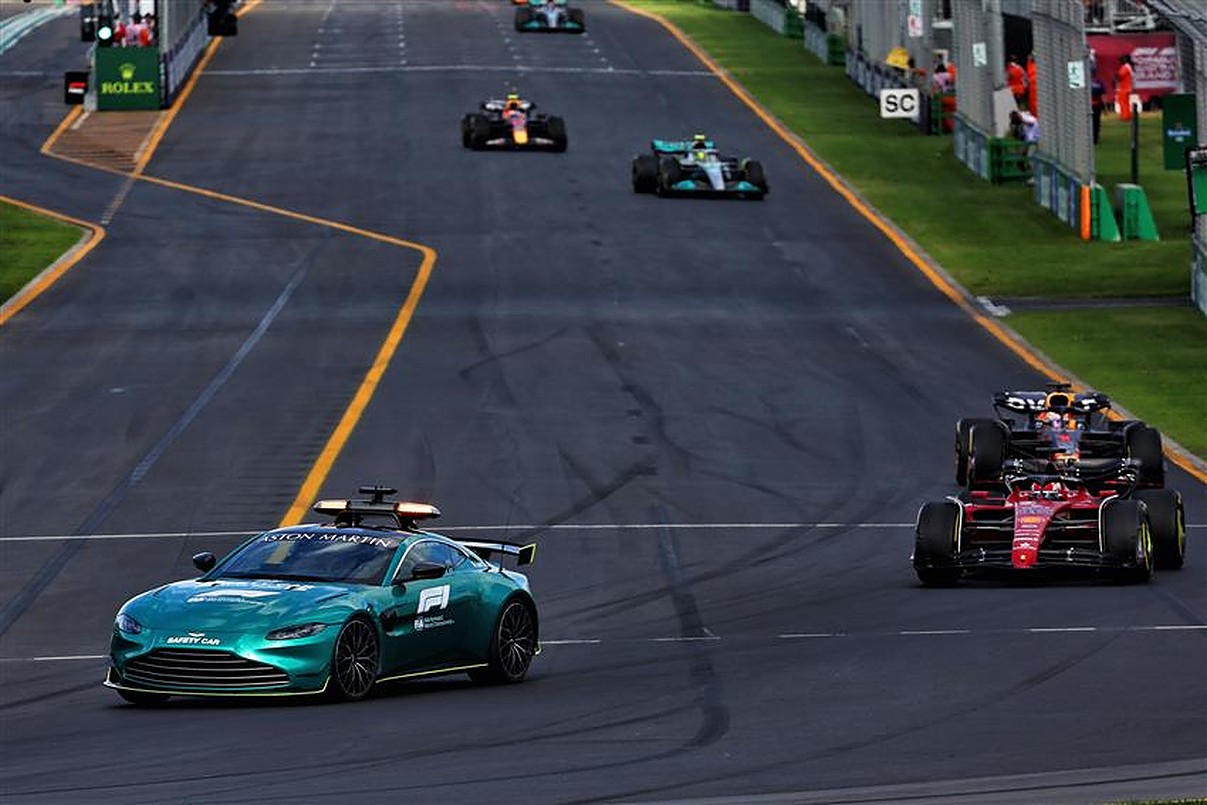“Industry observers” have noted that Aston Martin were likely the reason behind the FIA’s message to the teams and drivers that the Safety Car’s primary use is safety, and not speed.
Aston Martin and Mercedes share the responsibility of providing Safety and Medical Cars for each championship weekend, and these cars also serve during the Formula 2 and Formula 3 support races held at some of the events.
The British manufacturer’s cars made their first appearance of the season at the Australian Grand Prix after the Mercedes had been deployed in Bahrain and Saudi Arabia, and it was described by Max Verstappen as a “turtle” after it was deployed twice in the race.
READ: Red Bull reveal Verstappen’s Melbourne DNF was due to ‘porpoising’
Comments like these are likely to be ever more prominent this season after the turn of the new technical regulations that have seen the cars equipped with bigger tyres.
The new rubber provides the drivers with more longevity but, subsequently, getting them into an operating window is more difficult, so travelling at low speed for a number of laps will not be at all conducive to that.
The drivers therefore find themselves needing to brake and accelerate hard in order to retain as much heat as they can, and this almost led to a collision on the main straight between Yuki Tsunoda and Mick Schumacher in Melbourne.
Charles Leclerc took a lights-to-flag victory in Australia, and negotiated two Safety Car periods out in front.
He too believed that the pace might have been a little slow, but he appreciated that Bernd Maylander, who has been driving the Safety Car since 2000, is doing the best he can considering the obvious pace disparity between an F1 car and a road car.
“I wanted to complain [on the radio], but then I checked how much the safety car was sliding in the corner and I don’t think there was anything more that he could give, so I didn’t want to put too much pressure,” he said.
The German showed his appreciation for the 24-year-old’s acknowledgement of what is an incredibly difficult job.
“It’s nice that Charles Leclerc saw that I was absolutely at the limit. More was not possible with the best will in the world,” he added.
The remarks around the Safety Car’s pace prompted a perhaps slightly passive aggressive response from the FIA, who emphasised that the purpose of the Safety Car is to fulfil the security necessities of marshals and the drivers themselves when there is an incident on track, and not to cater to the drivers’ desires to go fast.
“In light of recent comments regarding the pace of the FIA Formula 1 Safety Car, the FIA would like to reiterate that the primary function of the Safety Car is, of course, not outright speed, but the safety of the drivers, marshals and officials,” they said in a statement.
“The Safety Car procedures take into account multiple objectives, depending upon the incident in question, including the requirement to ‘bunch up’ the field, negotiate an incident recovery or debris on track in a safe manner and adjust the pace depending on recovery activities that may be ongoing in a different part of the track.”
“The speed of the Safety Car is therefore generally dictated by Race Control, and not limited by the capabilities of the Safety Cars, which are bespoke high-performance vehicles prepared by two of the world’s top manufacturers, equipped to deal with changeable track conditions at all times and driven by a hugely experienced and capable driver and co-driver.
READ: ‘It could wreak havoc’: Horner issues warning to Formula 1 but Alpine wary of budget manipulation
“The impact of the speed of the Safety Car on the performance of the cars following is a secondary consideration, as the impact is equal amongst all competitors who, as is always the case, are responsible for driving in a safe manner at all times, according to the conditions of their car and the circuit.”
Whether Aston Martin truly had anything to do with the statement is unclear, but the drivers certainly have an obligation to remain safe themselves under Safety Car procedure, and the pile-up in Mugello in 2020 was perhaps a sign of a neglect of that duty.

